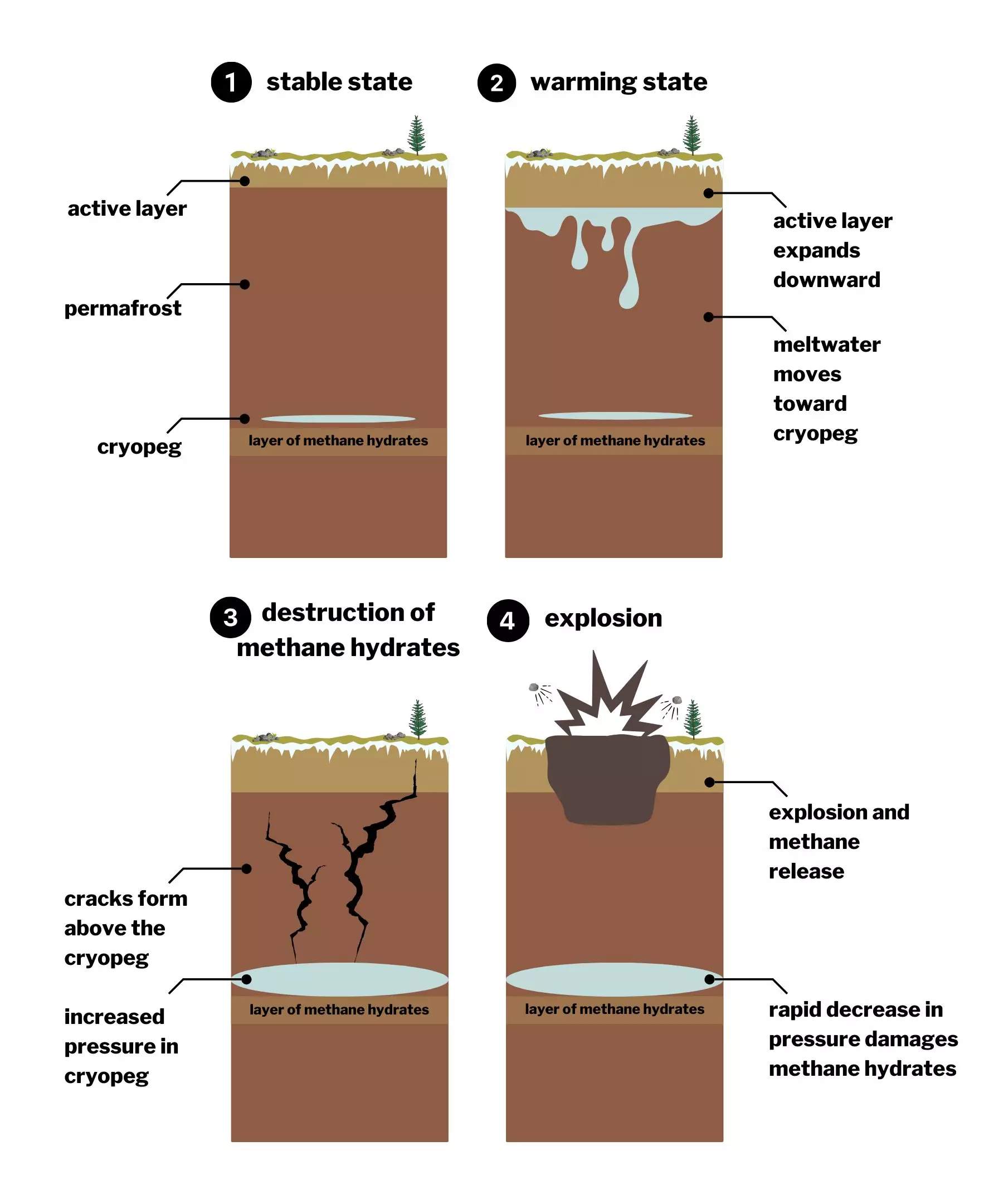The emergence of mysterious craters in Siberia over the last decade has captivated researchers and the public alike. Initially discovered on the Yamal Peninsula in 2014, these geological enigmas have provoked various theories regarding their origins. Recent research provides a nuanced understanding of how climate change-induced geological processes contribute to the explosive release of methane from these permafrost terrains. This article delves into the scientific inquiries and revelations that shed light on the mechanisms behind these explosive phenomena.
The craters on the Yamal Peninsula, with the largest measuring about 70 meters in diameter, represent a complex interplay between climate change and regional geology. The study published in Geophysical Research Letters underscores the fact that the explosions were not merely the result of thawing permafrost or proximity to natural gas reserves. The researchers spearheaded a detective-like investigation, comparing the phenomena to fundamental physical principles. As Ana Morgado, a chemical engineer from the University of Cambridge, indicated, the specific conditions necessary for these explosions are rare and confined to unique geological spaces.
The initial hypothesis suggested that permafrost melting led to a buildup of methane gas. However, the latest research reveals a more intricate scenario whereby the warming climate triggers significant pressure fluctuations deep within the earth. According to Julyan Cartwright, a geophysicist involved in the study, the research leaned towards physical processes rather than chemical reactions for these explosive events, guiding them to the conclusion that osmosis plays a crucial role in the buildup of pressure.
The concept of osmotic pressure provides an essential foundation for understanding how these craters form. In essence, osmosis refers to the movement of fluids from areas of lower concentration to areas of higher concentration through a semi-permeable membrane. In this case, the thick, clay-rich permafrost acts as an osmotic barrier, creating conditions conducive to pressure buildup. As the environment warms, the active layer of topsoil thaws and reaches down to previously stable layers of high-salinity water known as cryopegs.
These cryopegs, located within the permafrost, are kept in a liquid state due to a combination of pressure and salinity. As the ice melts above, the water flows into the cryopegs under osmotic pressure. However, the cryopegs cannot accommodate the additional meltwater, causing pressure to rise dangerously high. Eventually, this pressure disrupts the stability of the underlying methane hydrates, leading to rapid gas release and explosive eruptions.
This research highlights a temporal correlation between intensifying climate change since the 1980s and the increased frequency of these explosive events. The active layer of permafrost is now extending deeper due to rising global temperatures, affecting the natural balance between various subterranean layers. Notably, this interaction between climate change and regional geology produces events that may not happen under typical geological conditions elsewhere on Earth. It confirms the uniqueness of the Yamal Peninsula’s geophysical environment.
The potential for these explosive events raises alarming questions about the broader implications of climate change. As scientists study the effects of global warming, they can no longer treat local environments in isolation. The atmospheric release of methane, a potent greenhouse gas, could further amplify climate change, creating a feedback loop that escalates the issue.
The findings presented in this study represent just the tip of the iceberg in understanding the mechanisms driving these enigmatic craters. As Morgado and her colleagues have pointed out, the interplay between geology and climate is highly specific, making the situation on the Yamal Peninsula a unique case study. This carries noteworthy implications for understanding such phenomena globally, especially in regions where permafrost is prevalent.
In light of these revelations, the need for further research is paramount. Expanding investigations into similar geological formations across the Arctic and sub-Arctic regions could reveal trends that help predict future occurrences. Ultimately, a greater understanding of these geological dynamics is essential for comprehending the full ramifications of climate change and its influence on Earth’s delicate environmental balance.

